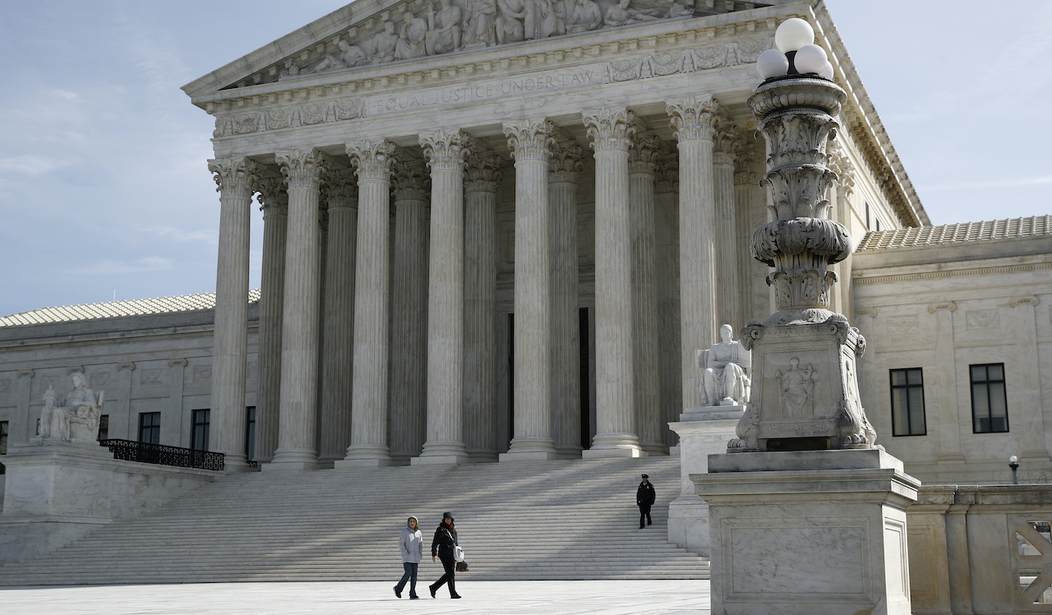
Back in 2015, the Montana state legislature passed a law giving a dollar-for-dollar tax credit to parents to elected to send their children to private schools. Montana’s state constitution, however, contains what is known as a “Blaine amendment,” which prohibits any use of state funds to support religious education. These amendments, the brainchild of Maine Representative James G. Blaine, targeted the growing system of Catholic schools in the country in reaction to one of the periodic waves of anti-Catholicism that washed over the nation since it colonial days. Currently 40 states have such amendments to their constitutions.
Shortly after the scholarship program was created, the Montana Department of Revenue promulgated what was called Rule 1. This rule clarified the definition of the term “qualified education provider” used in the law to prohibit any school “owned or controlled in whole or in part by any church, religious sect, or denomination.” This, the taxmen said, was because tax credits equaled expenditure of state revenue and the constitution forbade that. Some parents sued.
A district court, looking at recent Supreme Court decisions, issued an injunction. The state appealed to the Montana Supreme Court. That court decided that the district court was correct, but the constitution did prohibit use of state funds by religious schools, and therefore the entire law was unconstitutional. That decision was appealed to the US Supreme Court.
Today, by 5-to-4, with John Roberts shockingly joining the four conservatives on that court, the US Supreme Court ruled that blocking state aid to religious schools, if such aid was available to private schools, in general, was unconstitutional. This is from Roberts’s opinion:
A state need not subsidize private education, but once a state decides to do so, it cannot disqualify some private schools solely because they are religious.
That was 100% good news.
A myth has grown up that providing an education to children must be done by the government via a system of government owned and operated schools. Along with that myth a corollary has developed that any use of state revenue to support non-government schools deprives government schools of resources. This is patent nonsense. Tax dollars for education are to educate children and it doesn’t matter where that education takes place or who does it so long as it happens. If a child goes to a private school, the government school reaps a windfall. They not only don’t have to teach a child, they get to keep the taxes that child’s parents pay while the parent have to tuition in addition to the taxes.
This case, however, tends to have greater import.
Justice Neil Gorsuch went out of his way to demolish the idea that ‘free exercise of religion’ was the same as the Obama-esque ‘freedom of worship.’
Most importantly, though, it is not as if the First Amendment cares. The Constitution forbids laws that prohibit the free exercise of religion. That guarantee protects not just the right to be a religious person, holding beliefs inwardlyand secretly; it also protects the right to act on those beliefs
outwardly and publicly. At the time of the First Amendment’s adoption, the word “exercise” meant (much as it means today) some “[l]abour of the body,” a “[u]se,” as in the “actual application of any thing,” or a “[p]ractice,” as in some “outward performance.” 1 S. Johnson, A Dictionary of the English Language (4th ed. 1773); see also ibid. (5th ed. 1784). By speaking of a right to “free exercise,” rather than a right “of conscience,” an alternative the framers considered and rejected, our Constitution “extended the broader freedom of action to all believers.” McConnell, The Origins and Historical Understanding of Free Exercise of Religion, 103 Harv. L. Rev. 1409, 1490 (1989). So whether the Montana Constitution is better described as discriminating
against religious status or use makes no difference: It is a violation of the right to free exercise either way, unless the State can show its law serves some compelling and narrowly tailored governmental interest, conditions absent here for reasons the Court thoroughly explains.…
It doesn’t take a long or searching look through history or around the world to see how this can go. In the century before our Nation’s founding, Oliver Cromwell promised to Catholics in Ireland: “‘As to freedom of conscience, I meddle with no man’s conscience; but if you mean by that, liberty to celebrate the Mass, I would have you understand that in no place where the power of the Parliament of England prevails shall that be permitted.’” McDaniel, 435
U. S., at 631, n. 2 (opinion of Brennan, J.) (quoting S. Hook, Paradoxes of Freedom 23 (1962)); see also 1 T. Carlyle, Oliver Cromwell’s Letters and Speeches 395 (1845) (recording Cromwell’s October 19, 1649, letter to the Governor of Ross). Even today, in fiefdoms small and large, people of faith are made to choose between receiving the protection of the State and living lives true to their religious convictions.Of course, in public benefits cases like the one before us the stakes are not so dramatic. Individuals are forced only to choose between forgoing state aid or pursuing some aspect of their faith. The government does not put a gun to the head, only a thumb on the scale. But, as so many of our cases explain, the Free Exercise Clause doesn’t easily tolerate either; any discrimination against religious exercise must meet the demands of strict scrutiny. In this way, the Clause seeks to ensure that religion remains “a matter of voluntary choice by individuals and their associations, [where] each sect ‘flourish[es] according to the zeal of its adherents and the appeal of its dogma,’” influenced by neither where the government points its gun nor where it places its thumb. McDaniel, 435 U. S., at 640 (opinion of Brennan J.) (quoting Zorach v. Clauson, 343 U. S. 306, 313 (1952)).
Montana’s Supreme Court disregarded these foundational principles. Effectively, the court told the state legislature and parents of Montana like Ms. Espinoza: You can have school choice, but if anyone dares to choose to send a child to an accredited religious school, the program will be shuttered. That condition on a public benefit discriminates against the free exercise of religion. Calling it discrimination on the basis of religious status or religious activity makes no difference: It is unconstitutional all the same.
This is completely correct. The lack of an established religion does not mean freedom of religion is a second-class freedom or one that can be forcibly stripped from people in some quest to make someone else feel good about themselves.
When combined with Hosana Tabor and Trinity Lutheran Church, powerful precedents support freedom of religion as it was understood from the founding of the nation and not the crabbed ‘separation of church and state’ the left uses as a bludgeon on any show of faith in political life.














Join the conversation as a VIP Member